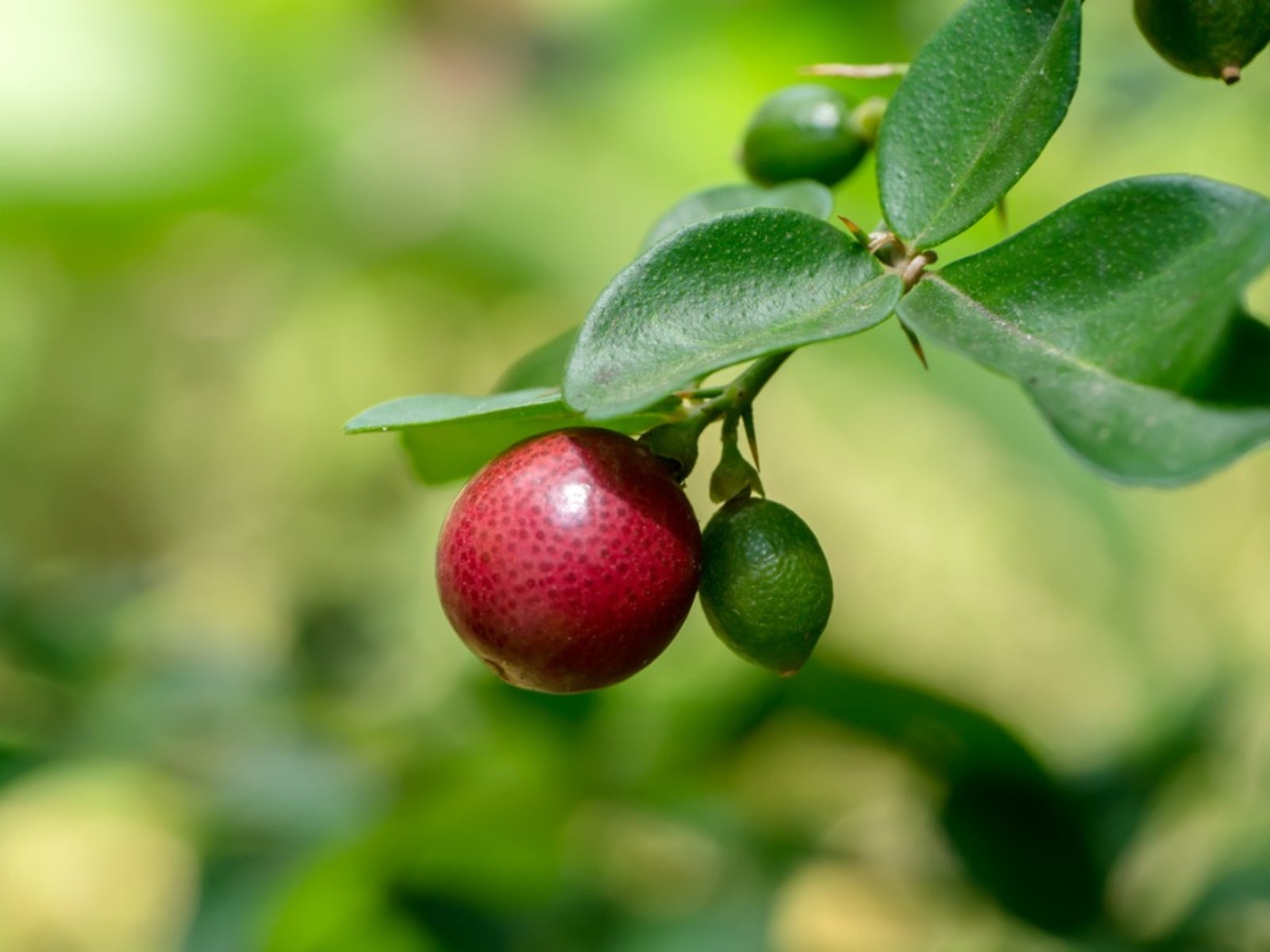What Is A Limeberry And Are Limeberries Edible?

Limeberry is considered a weed in some locations and valued for its fruit in others. What is a limeberry? Read on to find out more about limeberry plant information and about growing limeberry fruit.
What is a Limeberry?
Native to tropical southeastern Asia, limeberry (Triphasia trifolia) is an evergreen shrub that is closely related to citrus. Like most citrus, the branches are littered with thorns. The plant’s blossoms are hermaphroditic, fragrant, and white in color with three petals. The resulting fruit is bright red, containing 2-3 tiny seeds. The shrub can grow to a height of about 9 feet. Limeberry information tell us that it is sometimes spelled as two words (lime berry) and may also be referred to as Limau Kiah or Lemondichina. It has become naturalized on several islands of the tropical Pacific Ocean where it is commonly cultivated for its fruit. It has a less desirable reputation in several Indian Ocean archipelagos and along the Gulf Coast from Florida to Texas where it is viewed as more of an invasive species.
Are Limeberries Edible?
Since the plant is cultivated for its fruit, are limeberries edible? Yes, limeberries are edible and, in fact, quite delicious - reminiscent of sweet lime with a pulpy flesh not unlike that of citrus. The fruit is used to make preserves and is also steeped to make an aromatic sweet tea. The leaves are also of use and are utilized in the making of cosmetics and swirled into baths.
Limeberry Propagation
Interested in growing limeberry? Limeberry propagation is accomplished via seeds, which can be obtained through reputable internet nurseries. Limeberry plants make excellent bonsai plants or almost impenetrable hedges, as well as specimen plants. Limeberry can be grown in USDA zones 9b-11 or grown in a greenhouse. That said, information on the hardiness of limeberry is disputed, with some sources stating that upon maturity limeberry will survive frosty temperatures and others avowing the plants are far less hardy than citrus and must be greenhouse grown. Limeberry seeds have a short viable life, so they should be planted immediately. The plant prefers partial to full sun in moist to dry soil. Sow seeds in an area that has been generously amended with compost. Again, like citrus, it doesn’t like wet feet, so be sure the soil is well-draining.
Gardening tips, videos, info and more delivered right to your inbox!
Sign up for the Gardening Know How newsletter today and receive a free copy of our e-book "How to Grow Delicious Tomatoes".

Amy Grant has been gardening for 30 years and writing for 15. A professional chef and caterer, Amy's area of expertise is culinary gardening.
-
 Looking For Plants To Give You The Soft And Fuzzies? Try These 5 Fuzzy Leaf Plant Options
Looking For Plants To Give You The Soft And Fuzzies? Try These 5 Fuzzy Leaf Plant OptionsLovers of texture, drama, silver foliage and tactile plants will adore these special sensory garden additions. These fuzzy leaf plant options will leave you all aglow
By Susan Albert
-
 Get Ready For A Summer Of Hummers! Grow These Full Sun Hummingbird Plants and Flowers
Get Ready For A Summer Of Hummers! Grow These Full Sun Hummingbird Plants and FlowersIf you’re lucky enough to enjoy a sunny backyard, make sure you are maxing out on your pollinator opportunities and grow these full sun hummingbird plants and flowers
By Tonya Barnett